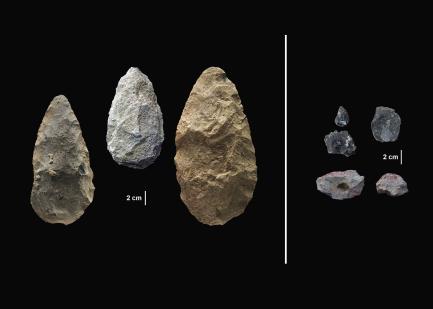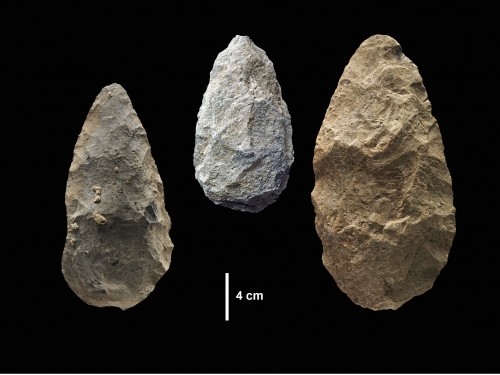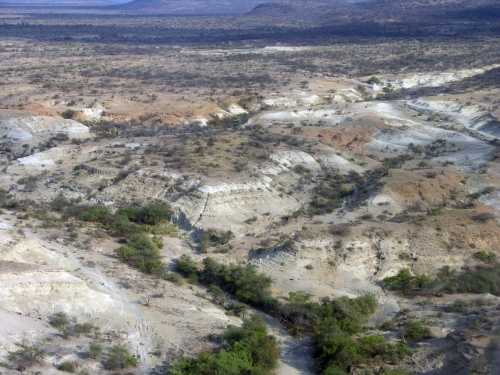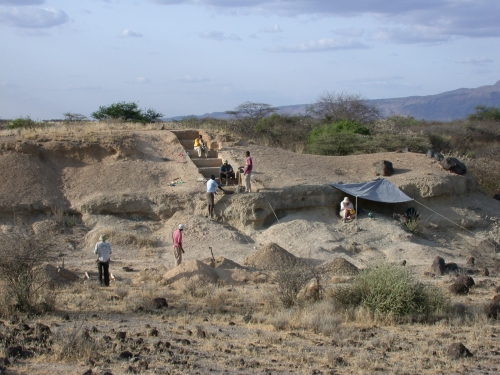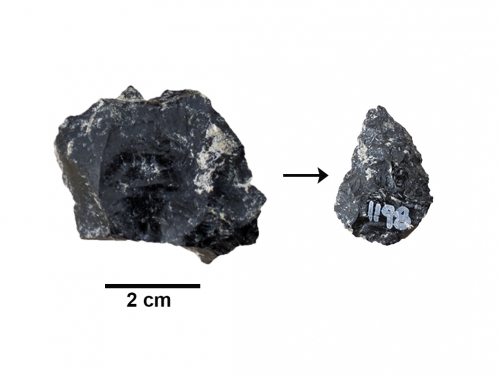The first evidence of human life in the Olorgesailie Basin comes from about 1.2 million years ago. For hundreds of the thousands of years, people living there made and used large stone-cutting tools called handaxes (left). According to three new studies published in Science, early humans in East Africa had—by about 320,000 years ago—begun using color pigments and manufacturing more sophisticated tools (right) than those of the Early Stone Age handaxes, tens of thousands of years earlier than previous evidence has shown in eastern Africa. The sophisticated tools (right) were carefully crafted and more specialized than the large, all-purpose handaxes (left). Many were points designed to be attached to a shaft and potentially used as projectile weapons, while others were shaped as scrapers or awls. The National Museums of Kenya loaned the artifacts pictured above to conduct the analyses published in Science.
Photo courtesy Human Origins Program, Smithsonian

